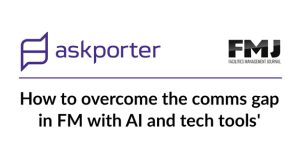To mark Clean Air Day (19 June), BSRIA, the leading authority in building services testing, intelligence and research, has released its refreshed Air Quality Hub. This enhanced resource centre is a vital toolkit, providing building and facilities managers with comprehensive guidance, testing protocols and practical solutions to improve indoor air quality (IAQ) in commercial and public buildings.
BSRIA’s Air Quality Hub offers expanded resources on IAQ testing, monitoring and improvement strategies, meticulously aligned with current certification standards including BREEAM, LEED and WELL.
“Poor indoor air quality can have significant impacts on building occupants, from short-term effects such as eye irritation and coughs through to more serious long-term health issues including respiratory infections,” said Calum Maclean, Specialist – Building Performance at BSRIA. “Our refreshed Air Quality Hub provides facilities managers with the knowledge and tools they need to create healthier indoor environments.”
The hub includes rigorous assessment protocols from UKAS, the UK’s national accreditation body, insightful case studies, practical technical guides, and access to BSRIA’s extensive range of air quality measuring instruments available for hire or purchase.
BSRIA experts have identified a number of practical, low-cost steps that building managers can take immediately to improve indoor air quality:
- Implement a thorough ventilation maintenance programme – Establish a regular schedule for inspecting and maintaining all ventilation systems. This should include visual inspection of ductwork for blockages, checking and cleaning air filters, ensuring fans are operating correctly, and verifying that air intake and exhaust points are unobstructed. Even simple maintenance can significantly improve system efficiency and air quality without requiring expensive equipment or specialist contractors.
- Conduct regular contamination audits – Perform visual inspections to identify common indoor pollutants and their sources. Look for visible signs of mould (dark spots on walls or ceilings), water damage (cracking, bubbling, or flaking surfaces), and areas with persistent odours. Document these issues with photographs and create a simple register of potential contamination sources that can be addressed systematically.
- Address problem areas with targeted solutions – Rather than implementing building-wide systems, focus on specific areas with known issues. Installing local extraction fans in high-humidity areas or areas with specific contaminants can be a cost-effective approach. Similarly, portable air purifiers can be deployed strategically in problem zones rather than throughout an entire building. BSRIA recommends monitoring carbon dioxide (CO2) levels to give indications of the overall air quality, with concentrations below 800 ppm considered good, 800-1000 ppm medium, and above 1000 ppm high, according to REHVA guidance for ventilation.
- Educate occupants and maintenance staff – Develop simple guidance for building users about practices that affect air quality, such as proper use of cleaning products, reporting water leaks promptly, and not blocking air vents with furniture. Train maintenance staff to recognise early signs of air quality issues during their regular rounds. This human-centred approach costs little but can prevent many common IAQ problems.
Maclean added: “By implementing these measures, building managers can create healthier, more productive environments while potentially reducing energy consumption and operational costs. Many indoor air quality issues can be addressed through diligent maintenance and simple interventions before considering more expensive solutions.”
For more detailed information on BSRIA’s Air Quality Hub, click here.
FMJ has partnered with global worktech leader, Eptura, to deliver a webinar on Thursday 26 June at 11am to discuss Eptura’s 2025 Workplace Index that suggests that over a third of employers are proactively looking to increase office attendance which could result in a rise in the use of AI and cross-platform data analytics to help manage FM operations.
The webinar will bring together experts from Eptura, along with FM thought leaders on the adoption of integrated solutions that unleash powerful data analytics capabilities, leading to increased productivity and reduced operational costs.
To register for the webinar please click here.
Can’t make it no problem… Simply sign up and after the webinar has been broadcast a link will be sent to you to watch the recording.





